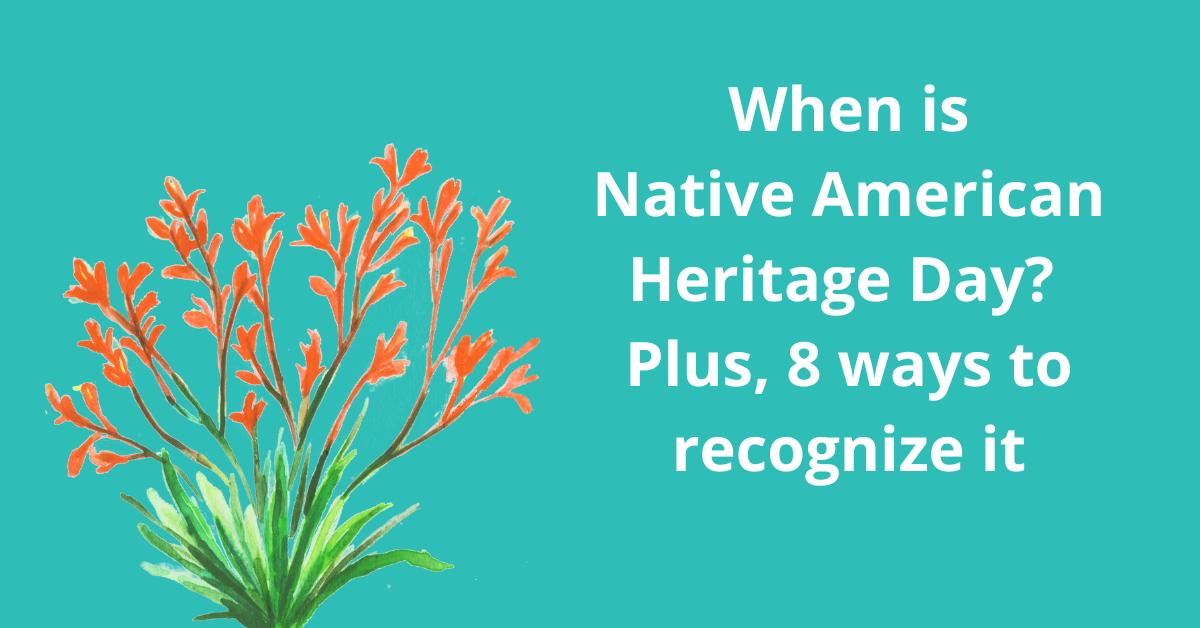Not sure when Native American Heritage Day is or how to recognize it within your workplace?
We’ll unpack the history and importance of this day below, as well as delineate key, ongoing ways to support Indigenous American workers — because supporting Indigenous communities is something you should be focused on not just in November, but year-round.
Indigenous Americans often face job discrimination in applying for roles, negotiating pay, and having access to opportunities to work from home. The remote angle is especially important: migration out of Native nations can have negative impacts not just on local economies but also on cultural wellbeing, per a 2022 report. Remote-friendly jobs can be meaningful opportunities for Indigenous American workers to learn, grow, and earn competitive salaries without having to move away from their land.
Yet, even as companies rushed to enable online work models at the onset of COVID-19, just 23% of Indigenous Americans were able to work remotely between May and July 2020. And while it’s true that Indigenous Americans tend to be overrepresented in frontline occupations, even when adjusting for specific job sectors, Indigenous workers still lag behind both white and Black workers in access to remote work today.
To be truly inclusive of Indigenous talent, it’s crucial that your efforts to reflect them in your DEIB hiring efforts don't start and stop with a single day on the calendar. Below, we’ll walk through ways to recognize, celebrate, and support Indigenous talent on Native American Heritage Day and beyond.
When is Native American Heritage Day?
Native American Heritage Day is marked on the Friday after Thanksgiving. In 2023, it will take place on November 24th. Native American Heritage Day falls at the end of Native American Heritage Month, which is celebrated throughout all of November.
It is different from Indigenous Peoples’ Day, which was marked on October 9, 2023, and was formerly known as Columbus Day.
How was Native American Heritage Day started?
A day set aside to recognize the contributions and culture of Indigenous Americans was first celebrated, per the Library of Congress, in 1915.
In 1990, President George H.W. Bush issued a joint resolution designating November 1990 “National American Indian Heritage Month.”
This year, President Joseph R. Biden, Jr., confirmed the holiday with a proclamation that also acknowledged the complicated history between the U.S. and Indigenous tribes, which includes broken treaties, land disputes, forced cultural assimilation, and genocide.
Why is Native American Heritage Day important?
Native American Heritage Day and Month is deeply necessary because it reinforces the rich culture, important contributions, and complicated history of Native peoples in the States.
It gives context to current challenges faced by Indigenous people and gives tribes an important platform to celebrate their stories and traditions. The celebration also showcases the beauty of the hundreds of Tribal communities spread around the U.S.
As the President said in his statement, the U.S. and Native communities are seeking to “write a new and better chapter in the story of our Nation-to-Nation relationships” as all Americans “honor the profound impact Native Americans continue to have in shaping our Nation and bringing us closer to the more perfect Union we know we can and must be.”
How can companies show support to Indigenous American people?
Celebrating Native American Heritage Day is an important first step, but it shouldn’t stop there. As a company leader, you can also consider taking the following actions:
1. Only do land acknowledgements if it’s how local and forcibly removed Indigenous people would like to be acknowledged — and don’t stop there.
Per the Smithsosian, a spoken or written land acknowledgement, or a reference to Indigenous peoples as original stewards of the lands one is currently on, is not enough. It can be a first step if it’s what the communities around you would like you to do, but your efforts should continue with education and action — otherwise, this can quickly give the appearance of performative allyship.
2. Educate yourself and encourage others to do the same.
You can start with reading the messaging guides and research put together by Reclaiming Native Truth, a nonprofit run by the First Nations Development Institute with a goal to “move hearts and minds toward greater respect, inclusion and social justice for Native Americans.”
Attract, retain, and empower underrepresented talent with our DEIB employer solutions.
3. Review your internal and external words and images referencing Native American people.
There is no one consensus on the best way to refer to communities of people whose ancestors have long lived on the land now known as the United States. Some prefer Indigenous, others Native, and others prefer to simply use the name of their tribe. However, the term “Indian” is now largely avoided, as it can be a painful reminder of extremely violent and problematic politics enacted against Native people. Consider surveying your community for what language they prefer, and don’t use stereotypical words, images, or phrases in internal or external company references.
4. Give employees a way to self-identify at work as a member of an Indigenous community.
Start with company surveys that give people a chance to voluntarily share their tribal affiliation, so that you can know the true diversity of your workplace and begin to support their various needs. Continue by investing into supporting ERGs focused on Indigenous people.
5. Ensure your interview process accurately and fairly evaluates Indigenous candidates.
People from different backgrounds have different values, experiences, and skills. You need to actively make sure that all candidates, including those from Indigenous backgrounds, are fairly evaluated. For example, guidance from Indigenous Works, a social enterprise with a goal to further the improvement and engagement of Indigneous people in Canada, points out that interviewers should be aware that some candidates may not value focusing on themselves and will instead speak about group accomplishments instead of individual ones.
6. Actively recruit Native American talent.
This is especially relevant for federal contractors, who can partner with the Office of Federal Contract Compliance Programs (OFCCP) and its Indian and Native American Employment Rights Program (INAERP) to match Native American recruitment sources to an organization’s needs. They can be contacted at OFCCP-INAERP@dol.gov.
7. Create ongoing partnerships, including training programs, internships, and workplace re-entry programs, with Indigenous communities.
The job market has historically left Indigenous American workers behind. Unemployment rates for Native American people are higher than for other groups, at 11.1% versus 4.4% at the beginning of 2022. You can help remedy that by investing in long-term partnerships with these communities and offering them resources, meaningful employment, and career growth opportunities.
8. Mark days like Native American Heritage Day and Indigenous Peoples’ Day as a company.
This can include giving the day as a company holiday or sponsoring a company-wide education opportunity, like a lecture from a local tribe or a group screening of films recommended by the Tribal College Journal or an Indigenous film and media college professor on behalf of Rotten Tomatoes.




